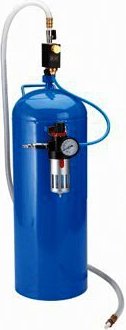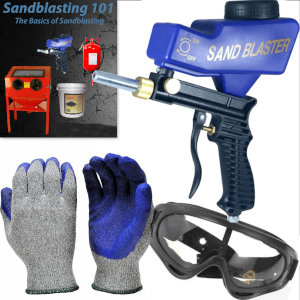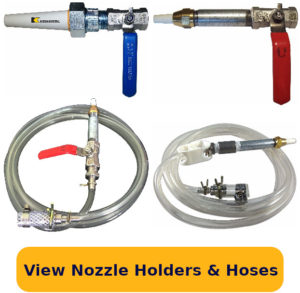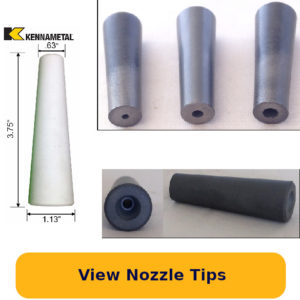Soda Blaster
A soda blaster is similar in design to the pressure pot sandblaster except it’s made specifically for the softer abrasives which is similar to baking soda. The baking soda abrasive is also better known as sodium bicarbonate in the industry.
 Note: Although baking soda is made of the same substance as approved sodium bicarbonate abrasive, you should not use it because it is not meant to be for blasting. Use only sodium bicarbonate designated for blasting.
Note: Although baking soda is made of the same substance as approved sodium bicarbonate abrasive, you should not use it because it is not meant to be for blasting. Use only sodium bicarbonate designated for blasting.
The sodium bicarbonate is not only soft, but it is also fairly fine in grit size. The benefits of using a soda blaster and its sodium bicarbonate abrasive, is it won’t cause pitting abrasion on the substrate and it will not warp sheet metal when blasting.
Harder abrasives like garnet & aluminum oxide are known to roughen up metals being blasted and sometimes (especially with courser grits) can cause sheet metal to warp due to the heat that it builds up when striking the surface.
Soda blasting is typically used for the materials listed below:
- Aluminum
- Thin sheet metal
- Pot metal
- Plastics
- other soft metals
Some typical components that people soda blast are:
- Carburetor components
- Intake manifolds
- Car body sheet metal
Making or Converting a Blaster into a Soda Blaster
I wrote a few posts up about converting a regular blaster into a soda blaster, and this post discusses the solutions you can use. Many readers have been asking me if they can use my plans and make a soda blaster. The answer is yes, and that post will show you how.




I know your interest is mainly in motorbikes, but do you think I need to soda blast my crystals rather than glass bead blast them if I wish to get a glossy finish. They are uneven surfaces.
It’s a new technology for us, and rely very interested in this kind.
Hoping to get more information, and a price comparison with the sand blasting
Soda doesn’t cut crystal at all just like glass. That’s why it can be used for sandblasting motorbikes and cars without masking.